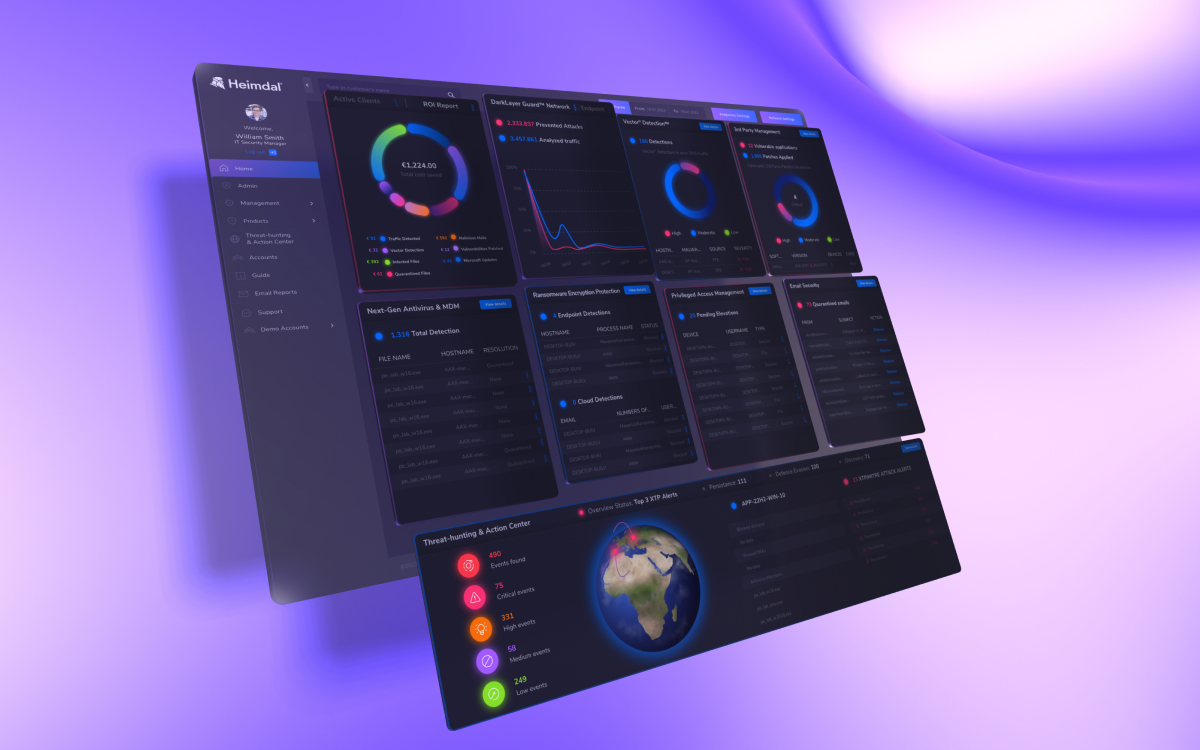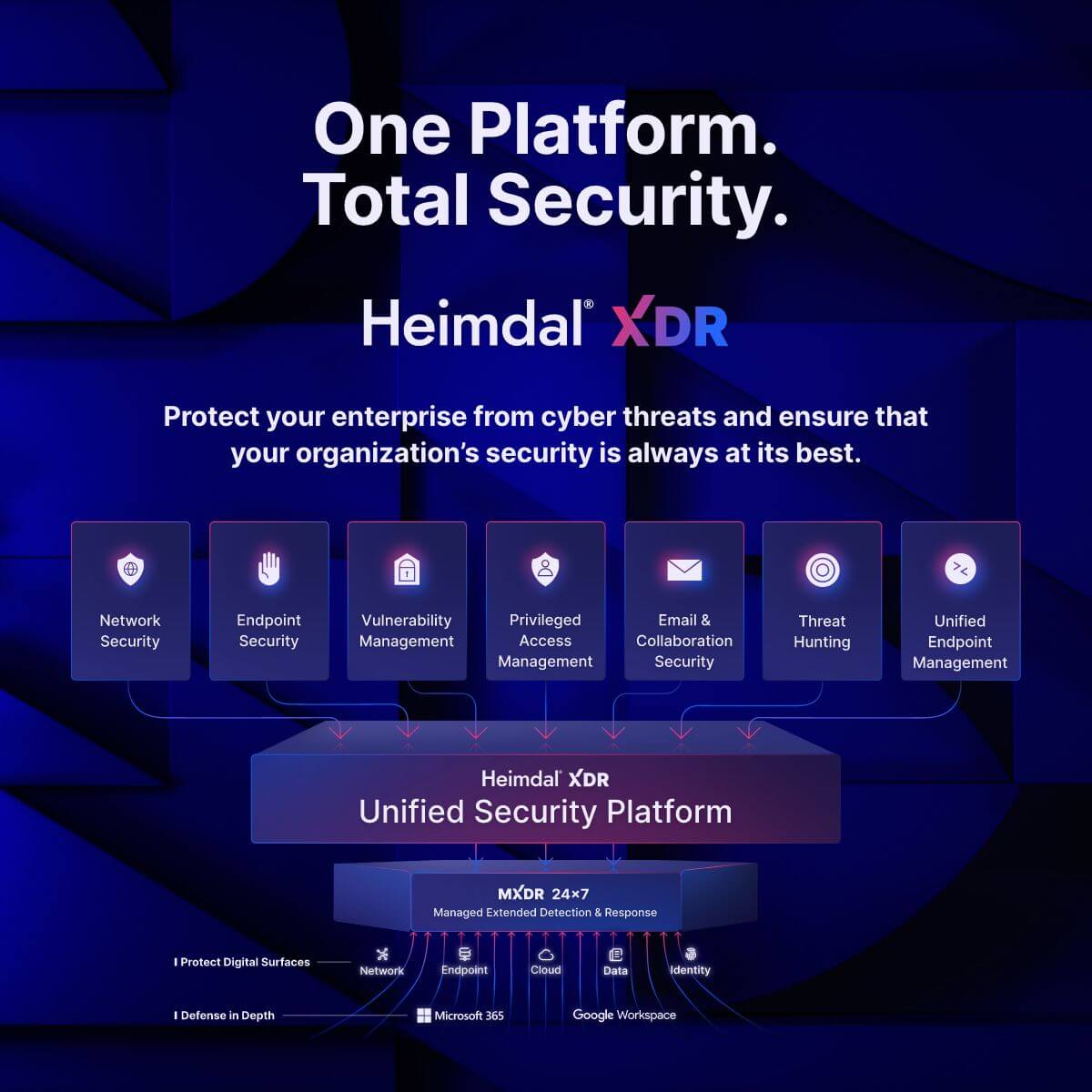Contents:
If you’re torn between Microsoft vs Palo Alto, choosing the right endpoint security solution can be overwhelming.
In this article, we will be comparing Microsoft Defender Endpoint Security and Palo Alto Networks Cortex XDR, analyzing their features, pricing, pros, cons, and more.
Microsoft Defender for Endpoint Security
Microsoft Defender for Endpoint integrates seamlessly with the Microsoft ecosystem, offering a comprehensive security solution for businesses that rely on Microsoft 365.
Defender provides multi-layered protection against cyber threats, including malware, ransomware, and phishing attacks, with a strong focus on ease of use and automatic threat remediation.
Features
- Seamless Microsoft 365 Integration: Works effortlessly within the Microsoft environment, providing end-to-end security for businesses using Microsoft tools like Azure and Office 365.
- Advanced Threat Protection: Defender’s advanced threat protection (ATP) continuously monitors for vulnerabilities and stops attacks before they cause significant damage.
- Automated Incident Response: The platform automates many security tasks, reducing the need for manual intervention and lightening the workload for IT teams.
- Endpoint Detection and Response (EDR): Delivers comprehensive threat detection and response capabilities, allowing businesses to investigate and remediate attacks quickly.
- Vulnerability Management: Continuously scans and prioritizes vulnerabilities, helping businesses stay ahead of potential risks.
Pricing
Microsoft Defender for Endpoint is either included in the Microsoft 365 E5 plan or available as a standalone product.
For businesses already using Microsoft products, Defender is one of the most cost-effective solutions available.
When comparing Microsoft vs Palo Alto, its pricing model is especially attractive for small and medium-sized businesses looking for budget-friendly, integrated security solutions.
Ease of Use
Defender is particularly user-friendly for businesses already integrated into the Microsoft ecosystem.
Its familiar interface, seamless setup, and minimal learning curve make it easy for companies to deploy security measures without needing advanced technical skills.
The platform’s automatic response capabilities further simplify security management.
Pros
- Seamless integration with Microsoft products: Defender fits perfectly within the Microsoft ecosystem, making it an excellent choice for businesses already using Azure, Office 365, or other Microsoft services.
- Comprehensive security at a lower cost: Especially cost-effective for businesses using Microsoft 365 E5, offering a wide array of security tools at a reasonable price.
- Automated threat response: Reduces the workload for IT teams by automating much of the threat detection and remediation processes.
- Real-time monitoring: Provides instant visibility into potential threats and active incidents, allowing for swift response.
Cons
- Best suited for Microsoft-centric environments: Defender’s advantages are most noticeable when used within Microsoft environments, limiting its effectiveness for non-Microsoft systems.
- Less advanced detection capabilities than premium competitors: While robust, Defender’s threat detection doesn’t match the advanced AI-based capabilities found in higher-end tools like CrowdStrike.
- Complex for mixed OS environments: Defender isn’t as intuitive in environments that include Linux or macOS devices.
Use Cases
Defender for Endpoint is a strong choice for organizations heavily invested in Microsoft products, such as those using Microsoft 365 or Azure.
It’s particularly well-suited for small and medium-sized businesses looking for a fully integrated, cost-effective security solution with minimal complexity.
Palo Alto Networks Cortex XDR Overview
Palo Alto Networks Cortex XDR is a security platform that covers all your bases—endpoints, networks, and the cloud. It provides deep visibility and control, helping you prevent, detect, and respond to cyber threats using AI-driven analytics.
Cortex XDR is particularly well-suited for organizations looking for a comprehensive, integrated solution that unifies multiple security layers into a single platform.
Features
- Unified Security: Integrates protection across endpoints, networks, and cloud environments, offering a centralized view for incident detection and response.
- Behavioral Analytics: Uses machine learning and user behavior analytics to detect unusual activity and prevent threats before they escalate. Cortex XDR’s behavioral analytics continuously improve through AI to reduce false positives.
- Customizable Policies: Allows security teams to create and tailor policies to meet specific business needs, providing flexible security controls and response workflows.
- Extended Detection and Response (XDR): Extends visibility across cloud workloads, endpoints, and network traffic for comprehensive threat detection and response.
- Automated Remediation: Automatically resolves threats using integrated remediation capabilities, reducing the need for manual intervention.
Pricing
Cortex XDR offers a subscription-based pricing model that scales based on the number of endpoints and the features included. It is designed for medium to large enterprises, offering flexibility and various pricing tiers depending on the level of protection needed.
For example, Cortex XDR Prevent provides baseline protection, while Cortex XDR Pro includes more advanced threat detection and response capabilities.
Palo Alto Networks also offers a free trial, allowing businesses to evaluate the platform before committing to a subscription.
Ease of Use
While Cortex XDR is powerful, the initial setup can be complex due to its extensive configuration options. However, once the system is properly configured, it provides deep insights and control over your security landscape.
The platform’s centralized dashboard offers a user-friendly interface for managing incidents, but some users report a steep learning curve when mastering the advanced features and custom reporting tools.
Pros
- Comprehensive coverage: Cortex XDR protects multiple environments, including endpoints, networks, and cloud platforms, making it an all-in-one solution for enterprises.
- Advanced behavioral analytics: Detects sophisticated threats using AI, improving over time and offering detailed insights into suspicious activities.
- Highly customizable policies: Security teams can tailor the platform to specific use cases, ensuring that it meets the unique security needs of different organizations.
- Reduced manual workload: Automated remediation and streamlined incident management significantly reduce the time spent managing threats.
Cons
- Complex to set up: The extensive configuration options can make initial deployment challenging, particularly for businesses with limited IT resources.
- Advanced features may be difficult to manage: Some users report that the platform’s depth and flexibility require a steep learning curve, especially when customizing advanced security settings and reports.
Use Cases
Cortex XDR is ideal for large enterprises that need robust, customizable security across multiple environments—endpoints, networks, and cloud.
It is particularly effective for organizations with complex infrastructures, where visibility across different systems is crucial for preventing advanced threats.
Best Alternative: Heimdal® XDR
If you’re looking for a flexible, unified solution that delivers cutting-edge protection, look no further than Heimdal® XDR. Unlike Microsoft vs Palo Alto, Heimdal® XDR provides a more adaptable and comprehensive approach to cybersecurity.
Our solution combines next-level threat intelligence, detection, and response capabilities into a seamless package that adapts to your business needs.

Heimdal® XDR provides real-time, scalable security against complex cyber threats and advanced malware.
Whether you’re a growing business or a large enterprise, Heimdal offers a future-proof, all-in-one defense platform.
What Heimdal® XDR Offers?

Our platform is the widest cybersecurity platform on the market! Choosing Heimdal® XDR means you’re getting an all-encompassing cybersecurity powerhouse built for comprehensive threat management.
Here’s what you can expect:
- Advanced Threat Hunting;
- Automated Remediation;
- Multi-Layered Endpoint Detection;
- Threat Tracking Scans;
- Proactive Attack Prevention;
- Vulnerability Management;
- Patch Management;
- Privileged Access Management;
- Email Security.
Conclusion: Which Solution Should You Choose?
Microsoft Defender for Endpoint is an excellent choice for businesses in the Microsoft ecosystem, offering strong security at a great price.
For organizations comparing Microsoft vs Palo Alto, the latter, with its extended detection and response capabilities, is better suited for organizations with more complex security needs.
Palo Alto Networks Cortex XDR is ideal for organizations with complex security needs, thanks to its advanced detection and response capabilities.
Alternatively, Heimdal® XDR offers a unified platform with advanced threat detection and automated responses, making it a versatile option for businesses of all sizes.










 Network Security
Network Security
 Vulnerability Management
Vulnerability Management
 Privileged Access Management
Privileged Access Management  Endpoint Security
Endpoint Security
 Threat Hunting
Threat Hunting
 Unified Endpoint Management
Unified Endpoint Management
 Email & Collaboration Security
Email & Collaboration Security









